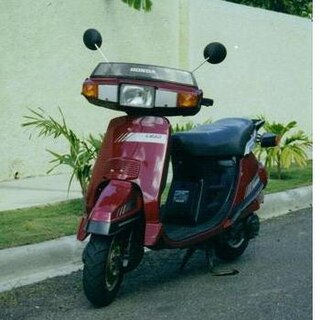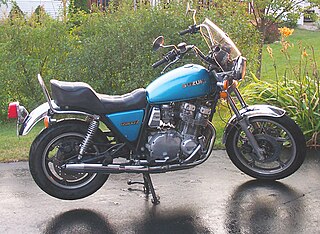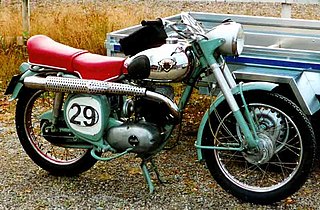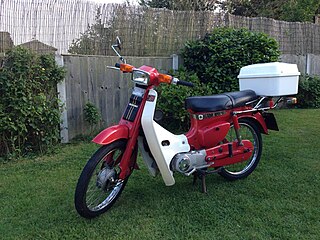This article has multiple issues. Please help improve it or discuss these issues on the talk page . (Learn how and when to remove these template messages)
|
1983 Suzuki CS50 DD, UK specification | |
| Manufacturer | Suzuki |
|---|---|
| Also called | Suzuki Gemma Puch Lido Suzuki Roadie |
| Production | 1982–1988 |
| Assembly | Japan, Austria |
| Class | Scooter |
| Engine | Near vertical 49–79 cc (3.0–4.8 cu in) two-stroke, 125 cc (7.6 cu in) four-stroke, air-cooled single |
| Transmission | 3 speed, automatic with wet multi-plate centrifugal clutch |
| Frame type | Step through pressed steel monocoque underbone |
| Suspension | Front: Mono-fork, Trailing link, telescopic shock Rear: Integrated engine/gearbox swingarm, telescopic shock |
| Brakes | Front: drum Rear: drum |
| Weight | 65–80 kg (143–176 lb) (dry) |
| Fuel consumption | 100 mpg‑imp (2.8 L/100 km; 83 mpg‑US) |
The Suzuki CS is a series of scooters/mopeds that were produced between 1982 and 1988 by the Suzuki Motor Corporation in Japan. The line-up consisted of three basic models, the CS50 (49cc two-stroke engine [1] ), CS80 (79cc two-stroke [2] ) and CS125 (125cc four-stroke [3] ). The CS series were marketed as the 'Suzuki Gemma' in Asia, and the 'Suzuki Roadie' in the UK and Australasia. The CS series was also produced under licence and sold in continental Europe as the 'Puch Lido'. [4]

A scooter is a type of motorcycle with a step-through frame and a platform for the rider's feet. Elements of scooter design were present in some of the earliest motorcycles, and scooters have been made since 1914 or earlier. Scooter development continued in Europe and the United States between the World Wars.
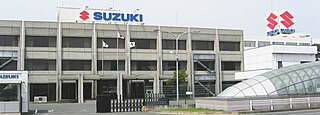
Suzuki Motor Corporation is a Japanese multinational corporation headquartered in Minami-ku, Hamamatsu. Suzuki manufactures automobiles, four-wheel drive vehicles, motorcycles, all-terrain vehicles (ATVs), outboard marine engines, wheelchairs and a variety of other small internal combustion engines. In 2016, Suzuki was the eleventh biggest automaker by production worldwide. Suzuki has over 45,000 employees and has 35 production facilities in 23 countries, and 133 distributors in 192 countries. The worldwide sales volume of automobiles is the world's tenth largest, while domestic sales volume is the third largest in the country.

A two-strokeengine is a type of internal combustion engine which completes a power cycle with two strokes of the piston during only one crankshaft revolution. This is in contrast to a "four-stroke engine", which requires four strokes of the piston to complete a power cycle during two crankshaft revolutions. In a two-stroke engine, the end of the combustion stroke and the beginning of the compression stroke happen simultaneously, with the intake and exhaust functions occurring at the same time.
Unusually, for this class of vehicle, all versions were equipped with a very reliable fully automatic three-speed gearbox, with the primary method of drive being a chain. The CS50 and CS80 are virtually mechanically identical, the main differences being a two-person seat, larger brakes (foot operated on rear) and larger headlight on CS80. The CS125 is almost entirely different and shares very few interchangeable parts.

Roller chain or bush roller chain is the type of chain drive most commonly used for transmission of mechanical power on many kinds of domestic, industrial and agricultural machinery, including conveyors, wire- and tube-drawing machines, printing presses, cars, motorcycles, and bicycles. It consists of a series of short cylindrical rollers held together by side links. It is driven by a toothed wheel called a sprocket. It is a simple, reliable, and efficient means of power transmission.
The CS50 was available with kick-start only (6 volt electrics), and electric start and kick start (12 volt electrics). [5]




